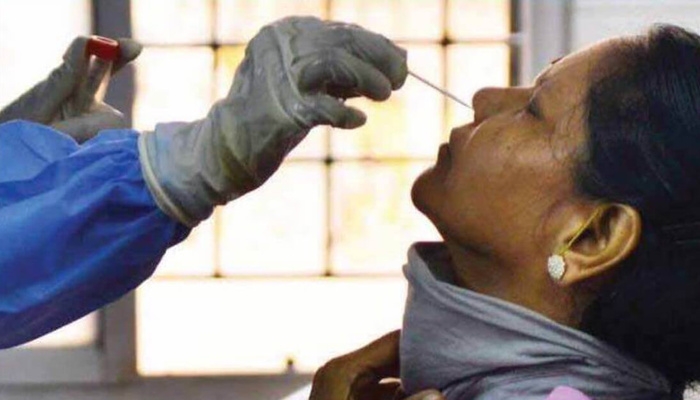

Health systems in both developed and developing countries are now struggling to respond to the challenges posed by Coronavirus Disease-2019 (COVID-19) pandemic. As of September 29, 210 countries and territories have been affected by the pandemic, with more than 33,249,563 cases and 1,000,040 deaths globally (WHO, 2020). With the outbreak of COVID-19, the entire world is working to address it as an international public health emergency. As the outbreak quickly surges worldwide, many countries adopt non-therapeutic preventive measures, including travel bans, remote office activities, country lockdown, and, most importantly, social distancing. However, these measures face challenges in Bangladesh, a lower-middle-income economy with one of the world's densest populations, where a significant proportion of the total population lives hand to mouth; lockdown is not a feasible idea. Social distancing is also difficult in many areas of the country, and with the minimal resources the country has, it would be very challenging to implement mitigation measures. Mobile sanitization facilities, temporary quarantine sites, and healthcare facilities could help mitigate the pandemic's impact at a local level. (National Guidelines on Clinical Management of COVID-19, 2020).
Coronavirus's first case in Bangladesh was confirmed on March 8, 2020, and the first death on 18th Match, 2020. In the first three weeks after detecting the first COVID-19 case in Bangladesh, the IEDCR was the sole diagnostic facility in the country of 180 million people, and the daily testing rate persisted below 100 per day (Dhaka Tribune, 2020). Five weeks after detecting the first COVID-19 case in Bangladesh, the IEDCR had only tested 11,223 people, constituting approximately 68 tests per million population (DGHS press release, 2020; Worldometer, 2020). The centralization of COVID-19 diagnosis facilities is somewhat plausible, as most hospitals do not have enough personal protective equipment (PPE). However, this left the mass of people and healthcare workers in a susceptible condition. Bangladesh had a severe shortage of testing kits, PPE, masks, which only covered a small portion of the country's actual needs (Chowdhury SI, 2020). Due to the combined lack of PPE and diagnostic testing capacity, fear and anxiety geared up among the mass population, and many healthcare workers refused to provide any service (Anwar S. et al., April 2020).
Following the detection of the first few COVID-19 cases in early March, Bangladesh has stepped up its efforts to strengthen the healthcare system's capacity to avert a crisis in the event of a surge in the number of cases (Khan MHR et al. May 2020). Bangladesh has started preparing to control and contain its pandemic based on the National Preparation and Response Plan. As a part of the preparation process, a guideline on clinical management was developed by the Bangladesh Society of Medicine in late January 2020. Nevertheless, the number of cases per million exceeds the number of available isolation beds per million in the major hotspots, indicating a risk of the healthcare system becoming overwhelmed. It is especially true for the Dhaka Division, where the ratio of COVID-19 patients to doctors appears to be alarmingly high. Among the eight divisions, prevalence is uppermost in the Dhaka Division, followed by Mymensingh and Barishal. With partial resources, expanding healthcare capacity remains a challenge for Bangladesh. There are about one hundred hospitals with ICU facilities in Bangladesh, and 80% of them are situated in Dhaka ("Message from president. Criticon Bangladesh 2018", 2018). Hospitals in Bangladesh presently have a total of 1,169 ICU beds. 432 are in government hospitals, and only 110 are outside the capital Dhaka, and 737 are in private hospitals (Khan & Hossain, 2020). According to "The Daily Dhaka Tribune," on March 21, 2020, Bangladesh currently has a total of 141,903 hospital beds or 0.84 beds per 1000 people. Whether these resources are adequate to tackle, the COVID-19 pandemic needs more in-depth analysis. This paper tries to determine the opportunities and challenges needed to strengthen the COVID-19 case management in Bangladesh through a qualitative approach.
Citizen's Voice